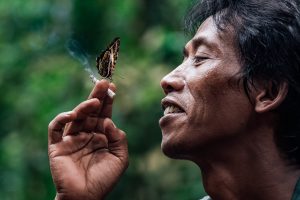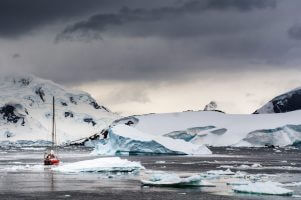Support Hidden Compass
Our articles are crafted by humans (not generative AI). Support Team Human with a contribution!
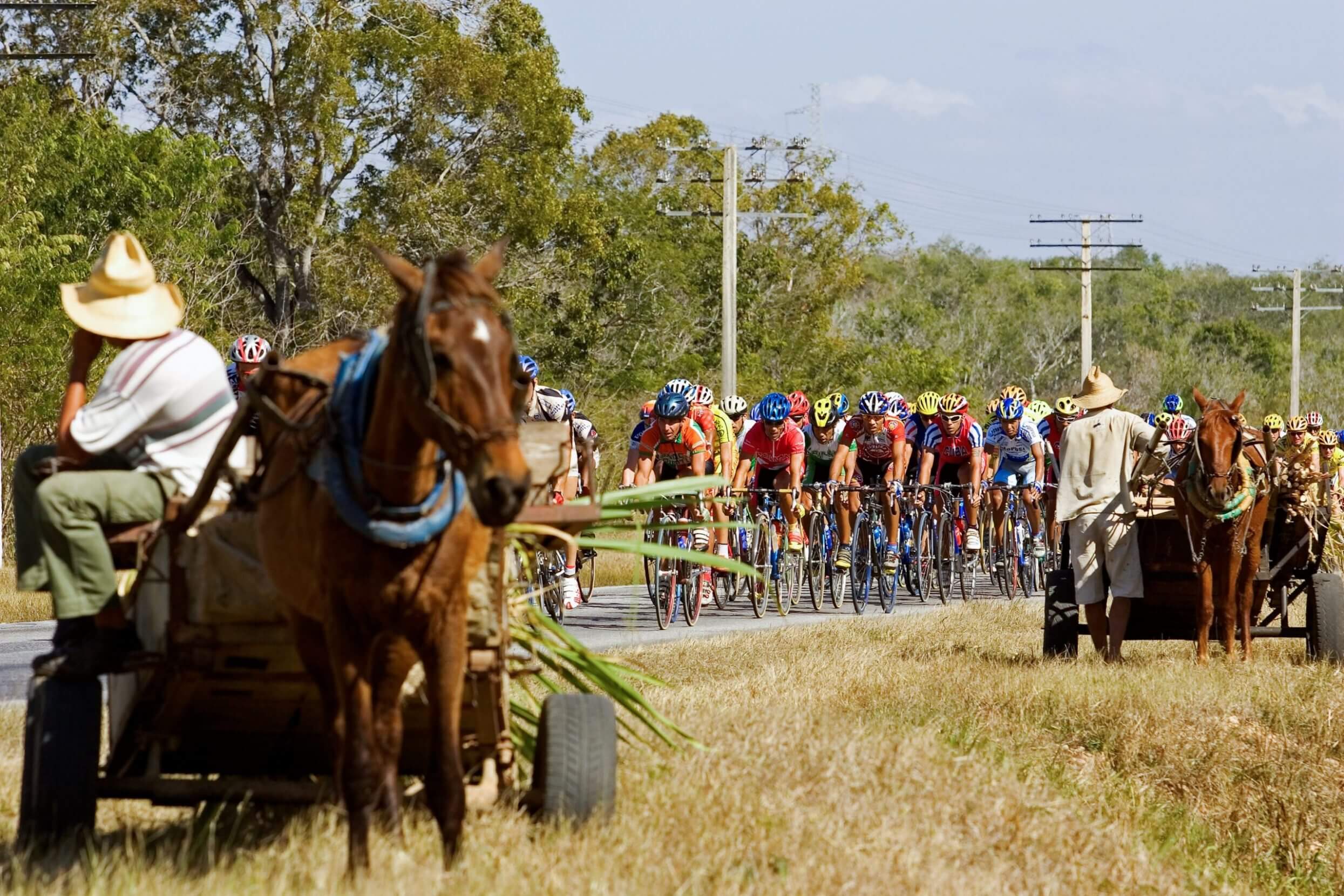
Although road bikes are hard to come by in Cuba, cyclists still find a way to enjoy the open road. PHOTO: CHRIS MILLIMAN / AURORA PHOTOS.
It’s another warm early December day in the Cuban countryside, perfect for a bike ride. I launch myself up a hill, legs spinning fast in a big gear. As the grade increases, I rise from the saddle and stomp on the pedals. The top of the hill is only 20 bike lengths away, and I feel a moment of triumph that none of the other riders have passed me.
That is until I notice a Cuban rider named Jorge on my left pedaling just hard enough to keep up, but not so fast as to shame me, the visitor. We both smile and crest the hill together.
“Fast,” he says after we roll to a stop in front of a faded hacienda, “but …” He points to his waist and pantomimes the extra 30 or so pounds I have on him. It turns out that good-natured ribbing transcends language barriers.
“It makes me faster on the downhills,” I reply, making a whooshing noise as my hand mimics a downslope. By this time, the rest of our pack has arrived, and we all share a hearty laugh.
On the day before their biggest race of the season, the Cuban Masters Cycling Club has chosen to pedal with a motley group of gringo cyclists — including myself. As we ride, I try to converse in my pitiful broken Spanish. Unfortunately, their English isn’t much better, so we enjoy a mostly silent ride through the countryside.
I’ve been riding past countless fields of sugarcane and African tulips, through bustling villages with salsa beats blaring from ancient stereos. We have passed innumerable time-worn taxis and horse-drawn carts, attracting curious glances from locals unsure of what to make of these strange interlopers clad in tight, brightly-colored lycra.
While our languages might be different, road cycling culture is the same everywhere. The more-serious riders in both camps each put in subtle accelerations, slowly ramping up the pace of the ride and splitting the group into smaller packs based on speed. A former amateur racer, I want to test my abilities against the masters. As we approach the first major climb of the day, it seems like they have the same idea: a race to the top.
~~
I first meet the team the night before our first ride at dinner at an eco-community and UNESCO Biosphere Reserve less than 50 miles outside of Havana. My riding companion Stephanie is fluent in Spanish, so she serves as the de-facto translator for our table. We spend most of the night chatting with José, who has the softened waistline of a man in his mid-60s, but the muscular calves of an athlete much younger.
José lives in Havana on a 270-peso-a-month pension — roughly $10 — which, coincidentally, is also the cost of a new bike tube in Cuba.
José isn’t his real name. Despite the incremental reforms since Raul Castro took over from his brother Fidel (Raul has since ceded much of his power to Miguel Diaz-Canel), José fears retaliation if the government were to dislike something he’s said to a foreign journalist. It’s not unheard of. According to groups like Amnesty International, people who spoke out against the government over the last 70 years have been arrested, given sham trials, and imprisoned — sometimes for years. It’s a sobering reminder that despite the reforms of the previous decade, many Cubans are still wary of their government.
Unlike many of his teammates, José wasn’t a competitive Cuban cyclist in his youth who worked his way up the ranks. He didn’t start riding seriously until the last decade or so when he joined some friends on a training ride atop a borrowed bicycle. He immediately felt a connection to the sport, but there was a problem — he didn’t have a bike.
José lives in Havana on a 270-peso-a-month pension — roughly $10 — which, coincidentally, is also the cost of a new bike tube in Cuba. That pension is about average for the island, which has the oldest population in Latin America. Working wages are similarly low, with the average worker earning about $25 a month. Less than five years ago, many doctors saw their monthly pay skyrocket from $30 to $45 or even $65. Workers in the tourism industry make the most money; Havana cab drivers earn on average of $60 a day, but usually pay exorbitant amounts for their cars.
Like most Cubans, José works side hustles for extra cash. (One doctor we met moonlighted as a hairstylist.) But no matter how many odd jobs José took, it was still impossible to afford a racing bike. Luckily for him, after the other club members realized how serious José was about the sport, they all chipped in from their meager salaries to buy him a used bike.
~~
Thanks to the long-running embargo, there’s a gap between the haves and have-nots in the Havana racing scene. Some riders compete on expensive bikes — gifts from Florida friends and family — while riders like José compete on rigs that have been bought and traded among Cuban cyclists for a decade or more. Mechanics, armed with only the most basic tools, operate out of their homes or on street corners during races. Worn parts that would be tossed into the recycling bin in the United States are the norm. Even the more well-heeled riders patch, re-patch, and patch their tubes yet again; most riders say they’ll patch a tube at least five times before they repurpose it.
With no bike shops on the island and replacement parts few and far between, few competitors take unnecessary risks during races; breaking a derailleur or damaging a wheel ends not only their race, but their season.
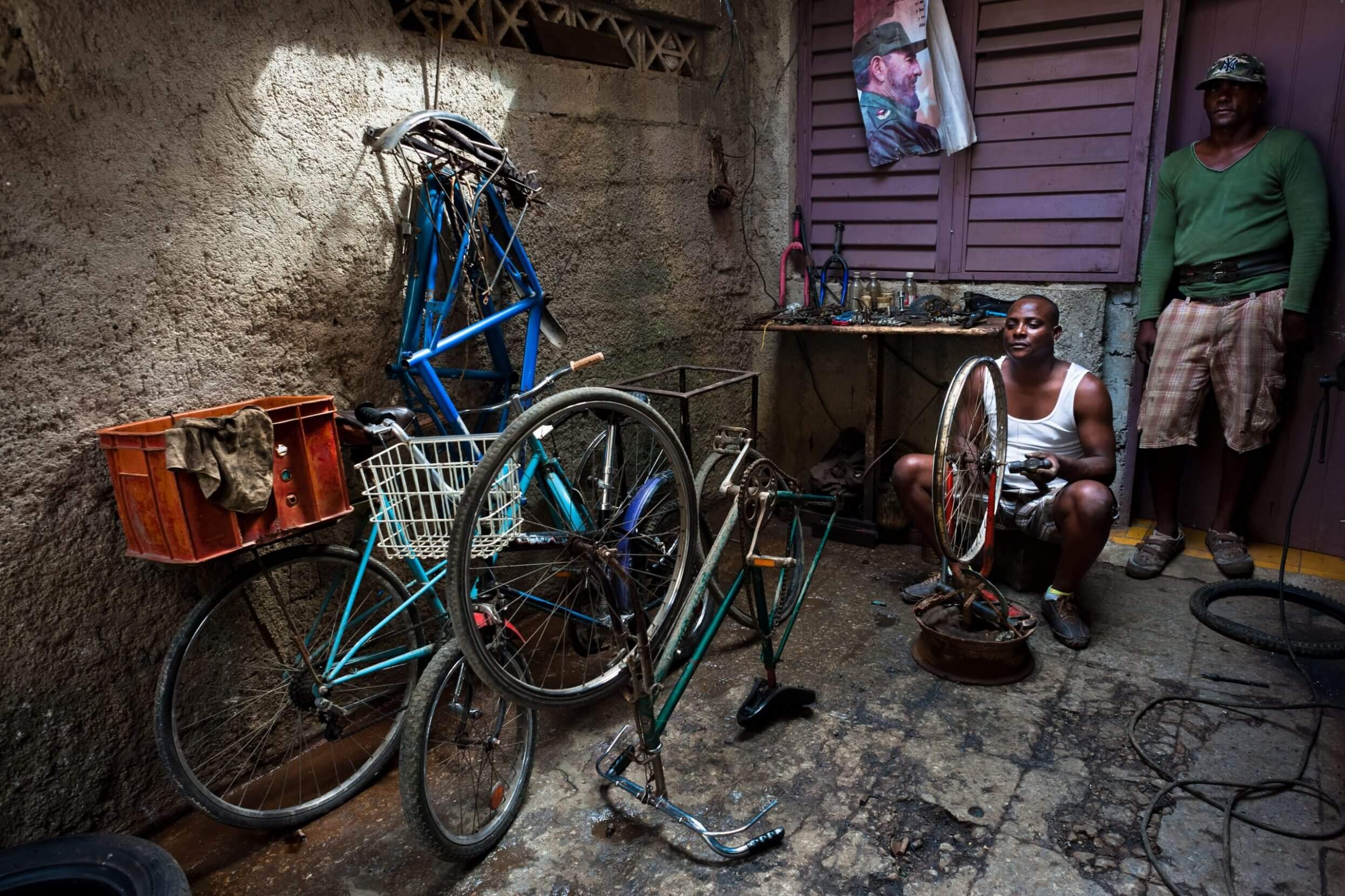
Although it’s challenging to find a bike shop in Cuba, there is still a need for bike mechanics, like this one who trues a wheel in Havana. PHOTO: JAN SOCHOR/ ALAMY STOCK PHOTOS.
Training for races offers additional headaches for Cuban cyclists. Riding inside Havana’s city limits can be dangerous because of the number of taxis rushing to get their next fare. Drivers don’t know the rules for driving around cyclists, so for safety reasons, riders often train on the three-lane highways leading in and out of the city.
Long training rides can be a gamble; if a bike breaks down, getting home becomes an ordeal as tough as any road race. Streets in and surrounding Havana and the other major cities are typically in great shape, but the farther out you venture, the worse they get. On the northwest tip of the island, many of the roads surrounding the breathtaking Viñales National Park suffer from decades of disrepair, with more wheel-sucking craters than pavement.
“The potholes are worse for us older guys because we can’t see them,” José laughs.
~~
Few Cubans see professional cycling as a viable path to wealth and riches, but there have been local riders who have made it to the world stage. José Mojica parlayed twice, winning the Cuban national road-racing jersey, and landing a contract with the Start-Vaxes continental team (the lowest level in the pro ranks). Arlenis Sierra and Yeima Torres both ride for the highest-level Astana women’s team, with the dynamic Sierra earning multiple wins at races throughout Latin America and racking up impressive showings in Europe.
Despite this, it’s hard to get noticed as a high-level rider inside the country. The Vuelta a Cuba used to be one of the primary stage races on the Latin American cycling calendar, but Cuba halted the race due to crumbling infrastructure. Although it relaunched several years ago, it’s been unable to regain its prominence. Foreign teams rarely race it anymore.
A few members of the Cuban Masters Cycling Club once raced for the Cuban National Team, but they eventually aged out of the program. In their younger days, the national team was sent by the Cuban government across the world to compete. Today, it’s different. Now, because there’s less of a spotlight on masters racing, the riders are mostly ignored. If they want to compete in a foreign race, they’d be forced to pay their way. Naturally, none of them can afford it.
~~
Racing bikes might be hard to come by, but ancient, utilitarian, single-speed bicycles are a frequent sight on the roads — although not as often as might be expected, given that less than one percent of Cubans own a car. Most rely on makeshift public transportation — ’57 Chevys converted into taxis, tractors pulling trailers filled with fare-paying customers, or even horse-drawn carts. Bikes would seem to be the perfect solution to most Cubans’ transportation challenges.
But many Cubans have bad associations with the two-wheelers; the Cuban government heavily pushed the bikes after the collapse of the Soviet Union. With no foreign oil or financial resources flowing into the island, people couldn’t obtain or even afford gas. Taxi services ended, and buses became even less reliable. Cuba began importing thousands of cheap bikes from China and Vietnam, hoping pedal power would get them through. But almost immediately, they started breaking down, and for many, the bicycle became a symbol of the island’s economic impotence.
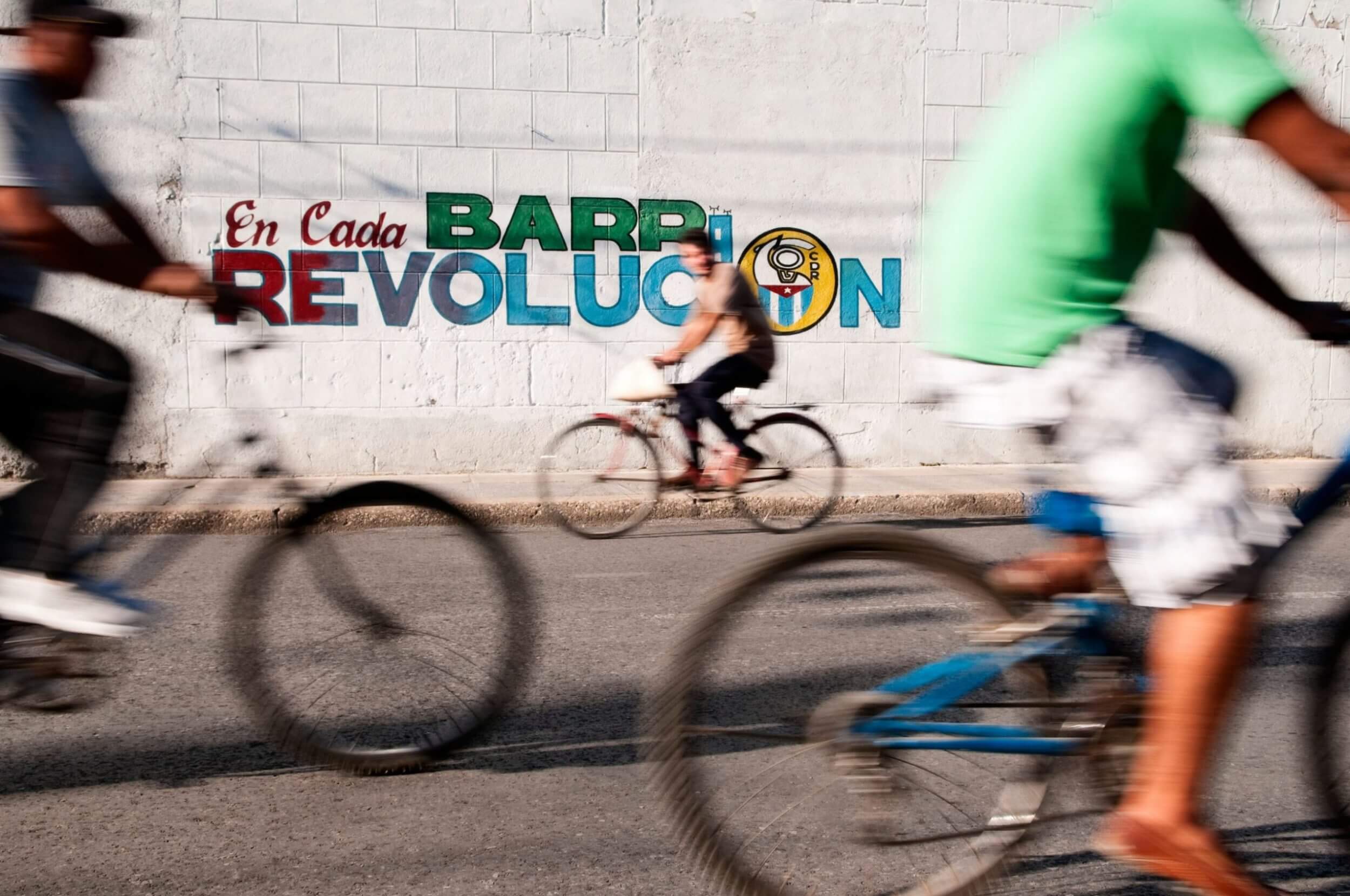
After the fall of the Soviet Union, for many Cubans bikes became a symbol of the nation’s economic impotence. PHOTO: JON ARNOLD IMAGES LTD / ALAMY STOCK PHOTO.
It’s a testament to Cubans’ ingenuity that many of these bikes are still on the road. During one stop, I take a closer look at one parked nearby — paint faded away, the stretched chain held together in places by wire, rags cushioning the thin tire instead of a rubber tube and air. Wherever we go, people are using ramshackle bikes to haul overflowing loads of tobacco leaves or large buckets of freshly caught fish.
~~
Most Cubans closely follow what’s happening in the US, bypassing state-run media or the practically nonexistent Internet in favor of black-market thumb drives downloaded with various TV shows and news articles. They cheered when President Barack Obama lifted some of the sanctions and travel restrictions targeting the island. Foreign investment began seeping in, and Cubans began preparing for a flood of American visitors. But both the cheers and the money dwindled to a trickle when the Trump Administration reinstated the restrictions soon after the 2016 election. Ironically, Trump’s actions came on the heels of long-sought Cuban reforms, like being able to buy and sell property or own a cellphone. Not surprisingly, Trump is not a popular figure in Cuba.
One of the most significant changes has been the Cuban government allowing citizens to start small businesses, leading to the proliferation of roadside snack stands. As both the temperature and our group climb throughout the days, these stands are a godsend. Women armed with large machetes operate almost all of them. The blades aren’t for protection, but for deftly chopping open coconuts, allowing us to guzzle the refreshing water inside. The sweet water and the local specialty guarapo (freshly squeezed sugar cane juice) keep our energy up as we roll over the countryside.
Cuba began importing thousands of cheap bikes … but almost immediately, they started breaking down, and for many, the bicycle became a symbol of the island’s economic impotence.
While I’d like to think the Cuban riders are here primarily for the experience of meeting their foreign compatriots, I know there are other factors at play. The food shortage is at the front of my mind as we chow down on our vegetarian dinners, each consisting of more food than most Cubans eat in two days. Food isn’t plentiful in José’s household (a common issue for Cuban families), so it can be difficult to get the needed calories before or after a long ride. Although we probably interrupted his training for the next day’s race, José takes full advantage of the carb-loading opportunity. Even the country’s top-performing racers have to think this way.
I’ve won bike races before, placing just high enough to win a little prize money. But in Cuba, José says, the winner might get a bottle of shampoo or a can of shaving cream. As one of about a dozen riders in his age group, he often walks away with something after a race. Every little bit helps in Cuba.
Our tour guides Pablo and Lara give the Cuban team basic equipment — tubes, tires, and the occasional set of brake pads or cables — and help with some of the trickier maintenance. I gift several sets of cycling clothes to the local riders. As I listen to José speak of the challenges, I think of all the spare bike parts I have in my garage at home and regret not bringing them all. Nevertheless, he assures me the kits will be used; if not by a member of the team, then traded on the riders’ equivalent of the black market.
~~
José has two kids — a son, 42, and a daughter, 38. His son doesn’t ride but often goes to his races to cheer and lend support.
“He worries about me,” José says. “Other people yell at us to go faster, but he’s always telling me to slow down. He doesn’t want anything bad to happen to me.”
There’s certainly plenty to worry about — from patching to potholes, bike racing in Cuba is full of challenges. But the same can be said of life throughout the island. Seeing the country from the saddle of a bicycle allows me to closely observe day-to-day life, as well as ponder the people’s complicated reality.
But despite the challenges facing José and my other new friends, they continue to find ways to race, ride, and pursue their passion. Road cycling culture is the same everywhere: Even in the face of seemingly insurmountable challenges, we all want to climb.
Robert Annis
After spending nearly a decade as a reporter for a major metropolitan newspaper, Robert Annis finally broke free of the shackles of gainful employment and now freelances full-time, specializing in outdoor-travel journalism.

